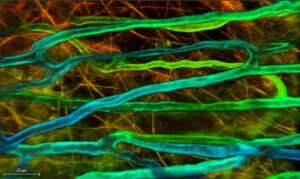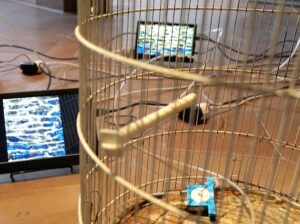Events 2022
NOVEMBER
“El Callejón del Ruido. Creación, ideas y tecnología. Resonancias e impacto (1994 – 2019)”.
November 2022 the Universidad de Guanajuato, Mexico published the book “El Callejón del Ruido. Creación, ideas y tecnología. Resonancias e impacto (1994 – 2019)”. Editors: Roberto Morales Manzanares y Cynthia P. Villagómez Oviedo.
The Spanish version (with pictures) of our article Arrhythmia, the birth of a biomechanical machine can be found at pages 35-43 of the link https://issuu.com/editoriaverano/docs/libro-electronico_el_callejon_del_ruido
For the English translation we refer to pages 283-286.
You will find the index of the book at page 8.
APRIL
Ecologies of Sound with Regard to Arrhythmia.
by Carmen Pardo Salgado
In Organised Sound, 27(1), 86-93 Carmen Pardo Salgado published an interesting article about our work Arrhythmia, a collaboration with Sergey Kostyrko: Ecology of Sound with Regard to Arrhythmia.
Theme of the issue: Commercial Music and Study of Electronic Music – Influence, Borrowings and Language.
FEBRUARY
Migratones at
Inversia Festival, Murmansk, Russia,
2-6 February 2022
Interactions within digital environment
and worldwide spread communities
We never thought that a few weeks after Inversia the world would change so dramatically after the Russian invasion of Ukraine. As long as the situation in Russia and Ukraine does not get to normal again Inversia will continue in a nomadic form outside the borders of Russia. See https://inversiafest.com/ You can find more about the Festival of 2022 at https://inversiafest.space/archive22/
Migratones is our third collaboration with Sergey Kostyrko (RU) after a workshop we realised in KKW, Leipzig (2016) and Arrhythmia, Halle (2019). Both former projects were curated by ArtSci Nexus.
In Migratones migration data of six different regions in Russia, processed by Sergey, control the air flow to each of the seven hanging mirlitons. As in our former collaboration data are transformed into “real, organic sounds” instead of electronically produced sound, emitted with loudspeakers, a common practice in sound art. Our contribution is largely based on our previous work Mirlitones. These organic sounds are combined with field recordings by Sergey from the Murmansk area, emitted from speakers, mounted in another set of hanging tubes. We recommend listening with good headphones or loudspeakers to experience the extremely low sound frequencies and their interferences.
The presentation of Migratones is financially supported by AC/E, Spain.







